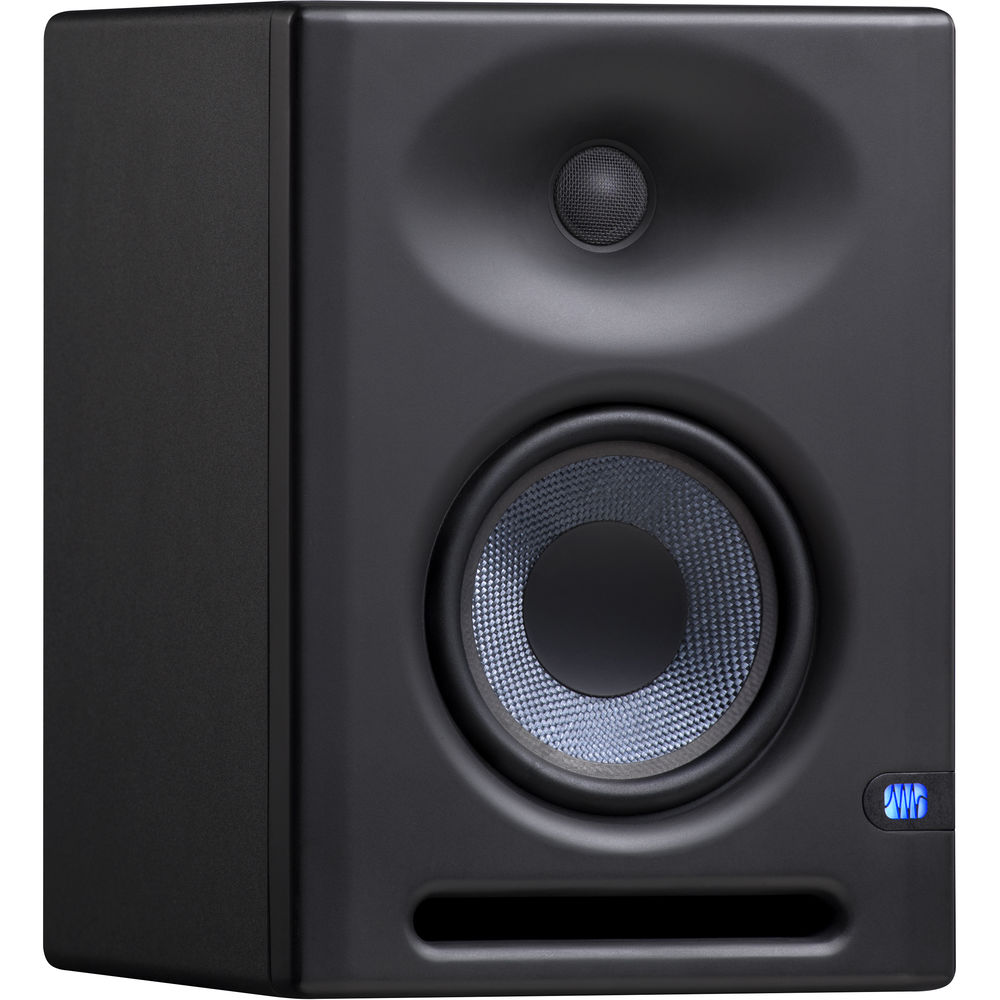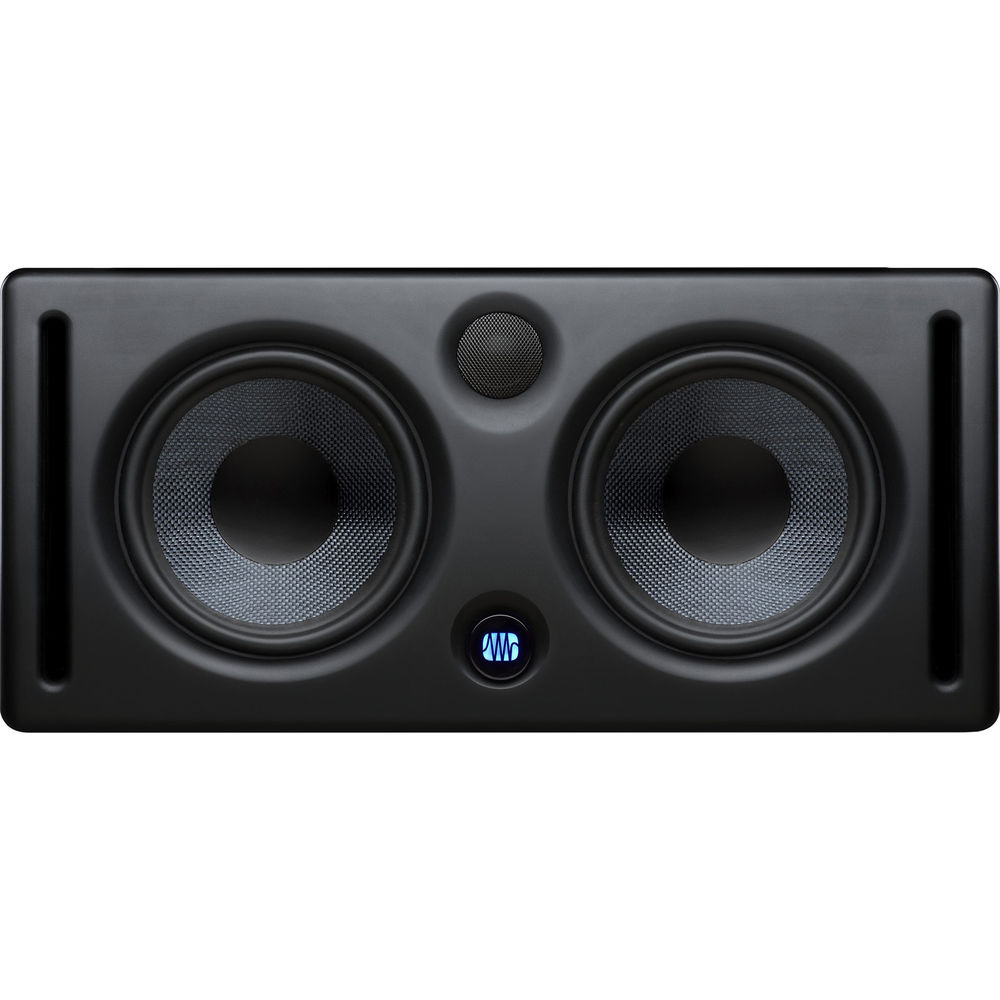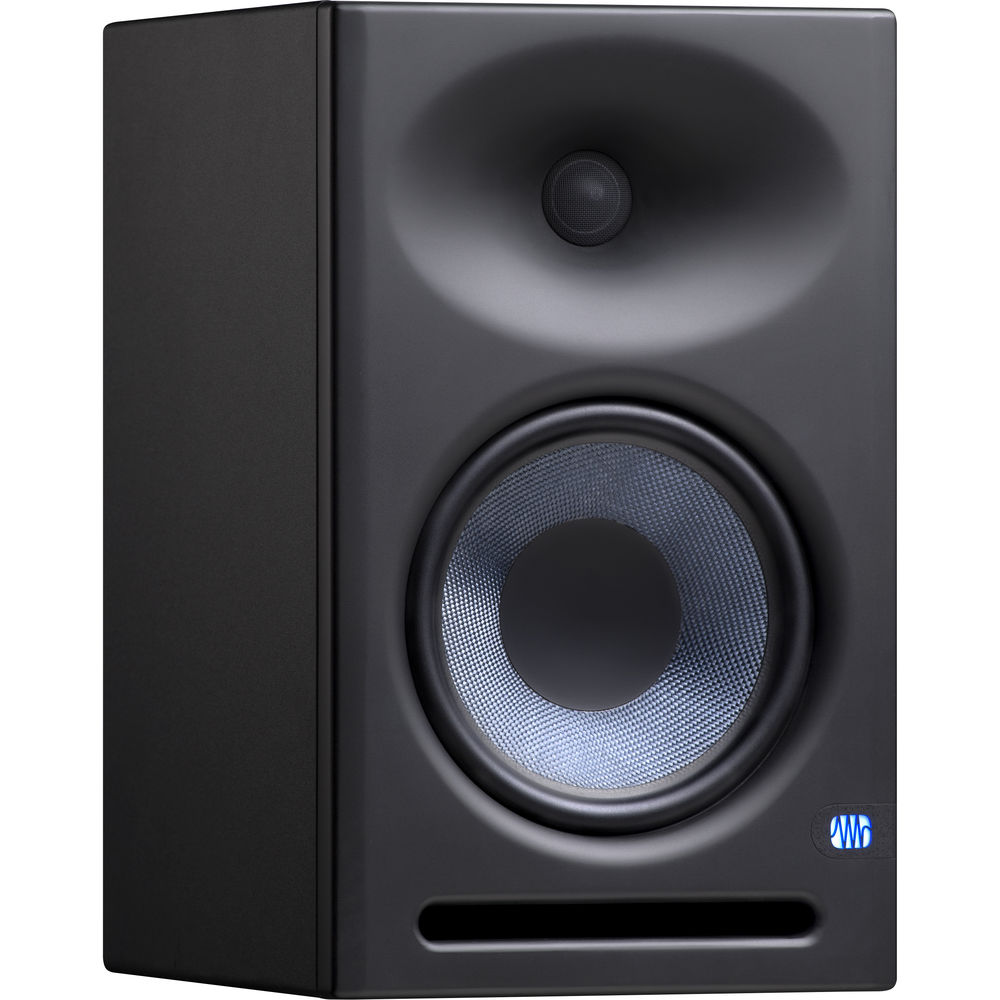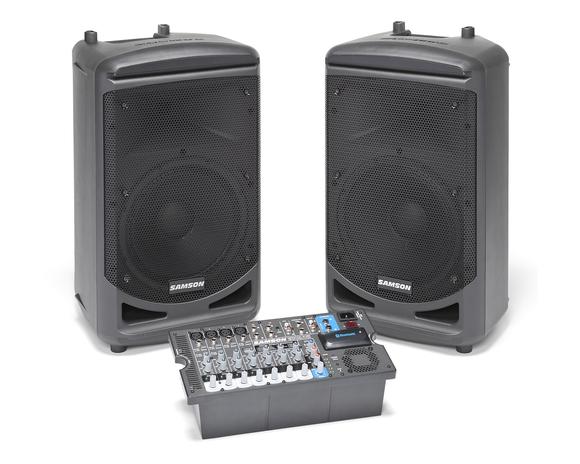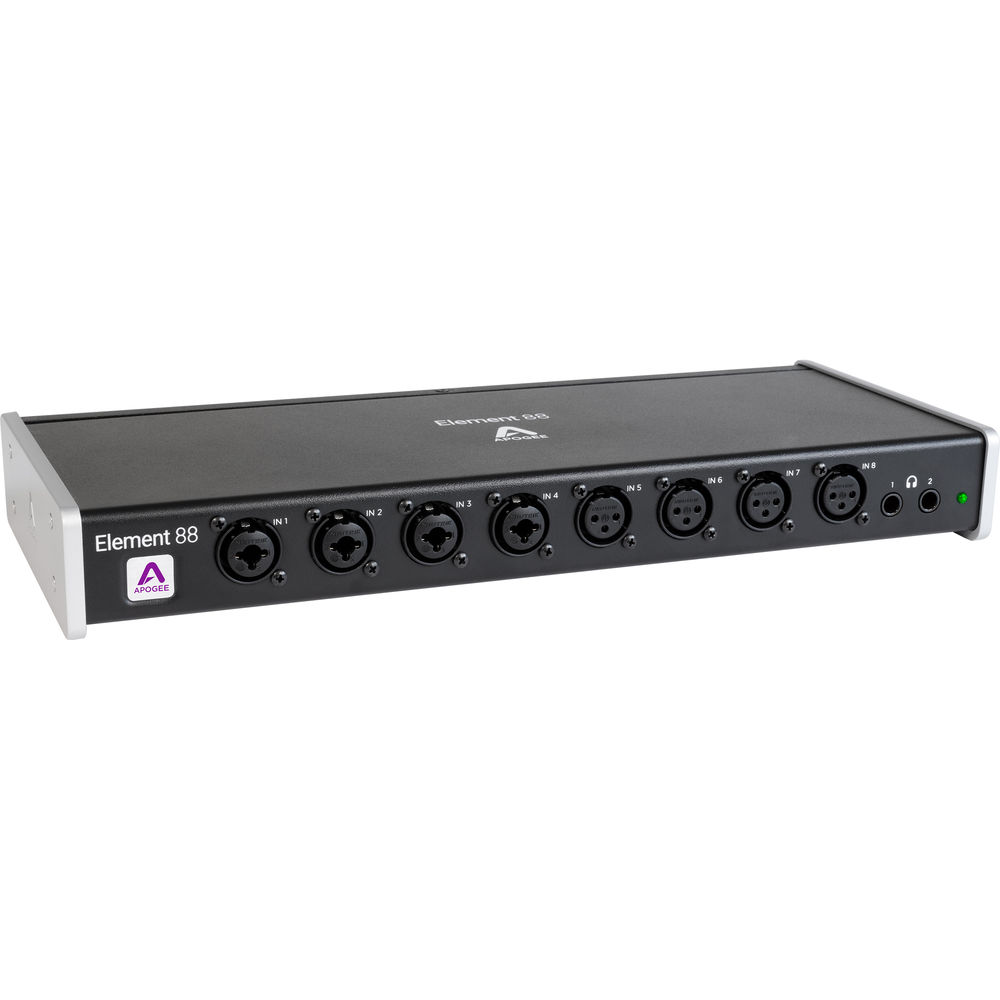Manufacturers
Categories
- Audio Recording Hardware - (306)
- -Audio Accessories - (30)
- -Audio Interfaces - (124)
- -Control Surfaces - (12)
- -Digital Recorders - (5)
- -Studio Audio Processors - (2)
- -Mobile Hardware - (49)
- -Studio Mic PreAmps - (18)
- -Studio Microphones - (48)
- -Studio Monitor Controllers - (2)
- -Studio Monitors - (16)
- Bargain Basement - (91)
- Computers - (5)
- DJ Hardware and Software - (20)
- EMB Book Shop - (187)
- Guitar - (89)
- Live Sound - (88)
- MIDI Hardware - (73)
- Music Software - (1140)
- Support/Lessons - (6)
- Used Gear - (139)
- Video Creation Hardware Software - (8)
Specials [more]

EastWest Hollywood Orchestra Opus Edition Diamond Mac PC
Save: 38% off

East West Forbidden Planet Hybrid Synth eLicense
Save: 40% off
New Products [more]
East West Iconic Mac PC Instrument eLicense
Save: 33% off
PreSonus Eris E5 XT Two-Way Active 5.25" Studio Monitor (Each)
PreSonus Eris E5 XT Two-Way Active 5.25" Studio Monitor with Wave Guide (Each)
With their smooth, accurate frequency response; powerful amplification with tons of headroom; and acoustic tuning functions that ensure you always get the best sound...it's no wonder that the original Eris®-series studio monitors have been a runaway hit since their introduction. The Eris E5 XT is a substantial update to a lauded classic. Deeper lows and a wider, more controlled sweet spot (thanks to its new EBM wave guide design) mean that our best-selling studio monitors just got even better.
We outfitted the Eris XT studio monitors with a new EBM (Elliptical Boundary Modeled) wave guide designed by none other than Hugh Sarvis of WorxAudio, the mind behind our award-winning CDL loudspeakers and lauded R-Series monitors. The result? A superior high-frequency response and wider 100-degree horizontal dispersion to create a broader sweet spot. It's ideal for group listening and collaboration – while narrow vertical dispersion reduces reflections from your desk. Silk-dome tweeters ensure snappy, accurate transient reproduction.
The familiar woven composite low-frequency driver still offers Eris' signature tight, clear bass; plenty of punch and no flub. Eris E5 XT studio monitors sport a ported enclosure that is larger than that of their predecessors, allowing them to reach down to an astonishing 48 Hz. That's 10 Hz below previous models – with no subwoofer required!
We know modern recording studios can be anywhere from a spare bedroom to a multi-million dollar facility; that's why every studio monitor we make is equipped with controls that ensure the flattest response in your mix environment. Acoustic tuning controls allow you to configure the Eris E5 XT perfectly for your room – you get Low-cut, Mid, and High controls, as well as 3-way acoustic space tuning that allows you to easily compensate for the sonic consequences of speaker placement against a wall or in a corner.
It's easy to feed audio to your Eris E5 XT studio monitors from an audio interface, mixer, monitor controller, or almost any other line-level source. Eris E5 XT monitors provide balanced XLR, balanced 1/4″ TRS, and unbalanced RCA line-level inputs. You'll have no problem hooking your Eris speakers up to virtually anything.
Suitable for both home recording studios and professional mix engineering, the Eris XT studio monitors combine sterling audio quality with the flexible tuning and connectivity you've come to expect from PreSonus. It's Eris, remastered.
Features include:
• 5-1/4″ woven composite low-frequency transducer
• 1-inch (25 mm), ultra-low-mass, silk-dome, high-frequency transducer
• Front-firing acoustic port for superior bass-frequency reproduction
• Optimized, resonance-suppressing internal bracing
• 102 dB maximum continuous SPL
• HF Adjust (+/-6 dB, continuously variable)
• Midrange Adjust (+/-6 dB, continuously variable)
• Acoustic Space settings (fl
PreSonus E5 XT Specs
| Monitor Type | Active 2-Way |
| Enclosure | Bass-Reflex, Shielded |
| Power Rating | 80 W RMS |
| Drivers | LF Driver: 1 x 5" / 127 mm Composite Woofer HF Driver: 1 x 1" / 25.4 mm Silk Dome Tweeter |
| Amplification | 1 x : Class-AB Rated at 80 W RMS |
| Maximum Sound Pressure Level (SPL) | 102 dB |
| Protections and Limiting | Driver Protection, Fuse, Output Current Limiting, Peak Limiter, Subsonic Filter, Thermal Limiting |
| Audio I/O | 1 x XLR Balanced Female Analog Input 1 x 1/4" TRS Balanced Female Analog Input 1 x RCA Unbalanced Female Analog Input |
| Package Weight | 12.715 lb |
| Box Dimensions (LxWxH) | 14 x 12.6 x 11.7" |
In accordance with California labeling requirements:

PreSonus Eris E66 Active MTM Studio Monitor (1)
PreSonus Eris E66 Active MTM Series Nearfield Monitor (Single Speaker)
The PreSonus Eris E66 Active MTM Series Nearfield Monitor has an expanded and highly accurate frequency response and a wide stereo field. Its nested Midwoofer-Tweeter-Midwoofer (MTM) configuration offers improved off-axis response and spatial resolution. The result is a more consistent listening experience, smoother frequency response, and an ultra-wide, detailed stereo soundstage.
Conventional 2-way designs can cause significant early reflections from their surrounding environment. The E66 overcomes this by positioning a 1.25", silk dome high-frequency driver between two 6.5" midrange drivers. The two smaller woofers work in parallel to partially contain the dispersion of the tweeter, minimizing phase displacement. The result is detailed stereo imaging.
The E66 features two midrange drivers that cover the same frequency range. The drivers are placed so that their acoustic centers are less than one wavelength apart for any of the frequencies they reproduce. This results in the combined signal of both drivers propagating forward like a single waveform. This makes the comparatively small midrange drivers in the E66 behave like a single, larger driver. This mutual coupling provides a highly dynamic output in a compact footprint.
Sound waves radiating from the two components in a conventional speaker design can interfere with one another, creating peaks at some frequencies and dips at others, and these will vary depending on where the listener is relative to the speaker. In an MTM configuration, component interference, and the sonic inconsistencies that go with it, are minimized. This affords listeners an ultra-wide sweet spot and a more consistent listening experience on- and off-axis.
The E66 utilizes custom-woven Kevlar low-frequency drivers. This provides a more constant dispersion pattern throughout the frequency range, resulting in less time-smeared audio and cleaner overall sound. The weave and nature of the dual Kevlar woofers also helps break up reflected energy, so fewer delayed reflections reach the listener's ear. In conjunction with the MTM configuration, this works to create a transparent, cohesive sound.
Having the midrange drivers closer together and raising the high-frequency driver, the E66 offers you the freedom to set the monitor as you need. This is different than most MTM configurations which must be arrayed vertically, rather than horizontally. This is because in the normal MTM configuration, vertical placement provides a clear, interference-free midrange and treble reproduction to either side, expanding the sweet spot.
This studio monitor offers acoustic tuning controls, including a three-position Acoustic Space switch that helps compensate for the boundary bass boost that can occur when a monitor is placed in a corner or near a wall. High and Mid controls help to further mitigate room anomalies. A Low Cutoff filter makes it easy to integrate a Temblor subwoofer into your monitor setup.
With three different types of audio inputs, it's easy to feed audio to your Eris monitor from a mixer, an interface, a media player, or almost any other line-level source. The E66 provides balanced XLR, balanced 1/4" TRS, and unbalanced RCA line-level inputs.
Features:
- Dual 6.5", custom-woven Kevlar LF/midrange drivers
- 1.25", silk-dome HF driver ensures smooth high-frequency performance
- Balanced XLR, balanced 1/4" TRS, and unbalanced RCA inputs provide flexibility
- Acoustic tuning controls help to compensate for room anomalies, providing a consistent frequency response
- Continuously variable HF and MF controls (-6 to +6 dB)
- Low-cut filter (flat, 80 Hz, 100 Hz)
- Acoustic Space settings (Flat, -2 dB, -4 dB) compensates for room placement
- 90/140 W Class A/B bi-amplification for an open, clear sound
- RF interference, output-current limiting, over-temperature, and subsonic filter protection
- Amplifier soft start feature eliminates popping on power-up
- Internal power supply with IEC connector
Specs:
- Frequency Response 45 Hz to 22 kHz
- Crossover Frequency 2.4 kHz LF
- Amplifier Power 80 W HF
- Amplifier Power: 65 W SPL Peak: 106 dB
- LF Driver Size 6.5" (16.51 cm)
- HF Driver Size 1.25" (3.17 cm) silk dome
- Input Impedance 10 kOhms
- Volume A-type taper
- Controls
- MF: variable (-6 to +6 dB)
- HF: variable (-6 to +6 dB)
- Low Cut Filters Flat, 80 Hz, 100 Hz
- Acoustic Space: flat, -2 dB, -4 dB
- Inputs
- Balanced XLR
- balanced 1/4" TRS
- unbalanced RCA
- Protection
- RF interference
- output-current limiting
- over-temperature
- turn-on/off transient, subsonic filter, and external mains fuse
- Power 100 to 120 V, 50/60 Hz and 220 to 240 V, 50/60 Hz
- Cabinet Construction Vinyl-laminated, medium-density fiberboard
- Dimensions 18.1 x 8.5 x 9.8" (46 x 21.5 x 25 cm)
- Weight 23.4 lb (10.6 kg)
UPC: 673454004131
In accordance with California labeling requirements:

Prices and availability subject to change without notice.
PreSonus Eris E8XT Two-Way Active 8" Studio Monitor (Each)
PreSonus Eris E8 Two-Way Active 8" Studio Monitor (Each)
With their smooth, accurate frequency response; powerful amplification with tons of headroom; and acoustic tuning functions that ensure you always get the best sound...it's no wonder that the original Eris®-series studio monitors have been a runaway hit since their introduction. The Eris E8 XT is a substantial update to a lauded classic. Deeper lows and a wider, more controlled sweet spot (thanks to its new EBM wave guide design) mean that our best-selling studio monitors just got even better.
We outfitted the Eris XT studio monitors with a new EBM (Elliptical Boundary Modeled) wave guide designed by none other than Hugh Sarvis of WorxAudio, the mind behind our award-winning CDL loudspeakers and lauded R-Series monitors. The result? A superior high-frequency response and wider 100-degree horizontal dispersion to create a broader sweet spot. It's ideal for group listening and collaboration – while narrow vertical dispersion reduces reflections from your desk. Silk-dome tweeters ensure snappy, accurate transient reproduction.
The familiar woven composite low-frequency driver still offers Eris' signature tight, clear bass; plenty of punch and no flub. Eris E8 XT studio monitors sport a ported enclosure that is larger than that of their predecessors, allowing them to reach down to an astonishing 35 Hz. That's 10 Hz below previous models – with no subwoofer required!
We know modern recording studios can be anywhere from a spare bedroom to a multi-million dollar facility; that's why every studio monitor we make is equipped with controls that ensure the flattest response in your mix environment. Acoustic tuning controls allow you to configure the Eris E8 XT perfectly for your room – you get Low-cut, Mid, and High controls, as well as 3-way acoustic space tuning that allows you to easily compensate for the sonic consequences of speaker placement against a wall or in a corner.
It's easy to feed audio to your Eris E8 XT studio monitors from an audio interface, mixer, monitor controller, or almost any other line-level source. Eris E8 XT monitors provide balanced XLR, balanced 1/4″ TRS, and unbalanced RCA line-level inputs. You'll have no problem hooking your Eris speakers up to virtually anything.
Suitable for both home recording studios and professional mix engineering, the Eris XT studio monitors combine sterling audio quality with the flexible tuning and connectivity you've come to expect from PreSonus. It's Eris, remastered.
Features include:
• 8″ woven composite low frequency transducer
• 1-inch (25 mm), ultra-low-mass, silk-dome, high-frequency transducer
• Front-firing acoustic port for superior bass-frequency reproduction
• Optimized, resonance-suppressing internal bracing
• 102 dB maximum continuous SPL
• HF Adjust (+/-6 dB, continuously variable)
• Midrange Adjust (+/-6 dB, continuously variable)
• Acoustic Space settings (flat,
PreSonus E8 XT Specs
| Monitor Type | Active 2-Way |
| Enclosure | Bass-Reflex, Shielded |
| Power Rating | 140 W RMS |
| Drivers | LF Driver: 1 x 8" / 203.2 mm Composite Woofer HF Driver: 1 x 1.25" / 31.75 mm Silk Dome Tweeter |
| Amplification | 1 x : Class-AB Rated at 140 W RMS |
| Maximum Sound Pressure Level (SPL) | 105 dB |
| Protections and Limiting | Driver Protection, Fuse, Output Current Limiting, Peak Limiter, Subsonic Filter, Thermal Limiting |
| Audio I/O | 1 x XLR Balanced Female Analog Input 1 x 1/4" TRS Balanced Female Analog Input 1 x RCA Unbalanced Female Analog Input |
| Package Weight | 25.165 lb |
| Box Dimensions (LxWxH) | 19.8 x 18 x 13.5" |
UPC: 673454008474
$259.95
Tannoy Reveal 501A 5" Active Studio Monitor (Single Monitor)
Monitors are priced as single items so you need to order two if you want a pair!!
Reveal
The original Reveal monitor was renowned for its rigid cabinet and substantial baffle. The new models have cabinets that have been further braced and refined, providing the most rigid platform possible for the new driver designs. Securely attached to the solid baffle, with no less than 10 hex socket countersunk-head screws, an all-new bass driver performs with significantly reduced distortion.
REVEAL 501A
The original Tannoy Reveal Active near field monitor hasbecome an iconic fixture in recording studios across the world since itsarrival in the mid-nineties, widely recognised as the product that defined thecategory and has been the active monitor of choice for thousands of amateur andprofessional recording, creative composition and postproduction facilitiesworldwide. Building upon this world-class reputation, the all new Tannoy RevealActive series represents the latest evolution of Tannoy’s high resolution activereference monitor technology.
Whether you’re building a studio on a budget and don’twant to compromise on sonic quality, or you need an active monitor with a smallfootprint, the Reveal 501a offers the perfect solution. Built to the samesuperior standard as the rest of the new Reveal range, the Reveal 501a packsperformance, accuracy and value into a compact enclosure. Priced competitivelywith the entry-level recording setup in mind, the all new Reveal501a delivers awide bandwidth performance that will impress even the most seasoned pro.
Ahead of the Curve
The sculpted curved edges of the new Reveal’s front baffle help to eliminate unwanted diffraction caused when sound dispersed from the sides of the cabinet is scattered back into the near field causing interference and phase distortion. By carefully smoothing off these edges, this unwanted diffraction is significantly reduced, delivering critical improvements to frequency response and crystal clear imaging, even when off-axis.
Optimised Tweeter Design
In the pursuit of achieving a wide and even nearfield monitoring ‘sweet spot’, delivering accurate and highly controlled high frequencies is critical. The new Reveals feature a brand new tweeter design comprising of soft dome HF driver coupled to an elliptical waveguide that has been optimised to provide very controlled high frequency directivity and minimise diffraction, providing a wide and consistent listening field.
Forward Thinking
Most studio monitors feature bass ports on the rear of their cabinet. This type of design leads to an inherent problem called bass-coupling whereby low frequencies are amplified when the monitors are located close to room boundaries, leading to coloured and inaccurate mix results. The new Reveals feature front-firing reflex bass ports however, to allow for ideal positioning even within small or confined studio spaces, while still providing defined bass performance.
With the benefit of being active (self-powered), the Reveal501a’s perfectly matched integrated amplifier ensures maximum efficiency from the 5” woofer and 1” soft dome tweeter and removes any need for a separate power amp. Response has been optimised for quarter space near field operation, such as on a meter bridge or on a table either side of your control surface, while independent gain control is provided on the rear panel, along with HF trim control, to allow fine tuning.
The low distortion 5” LF/MF driver voicing has been enhanced to deliver a natural and accurate ultra-linear response in the low and midrange frequencies, while the wide bandwidth tweeter extends the amplitude response beyond the 20kHz audibility threshold to 30kHz to improve the phase response within the audible band. This preserves the harmonic structure of sounds and the stability of the stereo image, ensuring stunningly accurate mix translation.
The rigid MDF cabinet construction provides stiffness and minimises colouration, while internal bracing of the sides and rear against the back of the bass driver provides a rigid reactive mass for the moving cone assembly; this ensures fast tight bass response and clear midrange. The curved edged design of the front baffle helps eliminate diffraction, while the front-firing bass port avoids the problem of exaggerated bass response as a result of boundary-coupling – a pitfall inherent with rear-firing designs when positioned close to a wall. The new elliptical tweeter waveguide has also been optimised to control high frequency directivity and minimise diffraction, ensuring a wide and even sweet spot.
Both balanced XLR and unbalanced TRS jack inputs complete the versatile package, ensuring the Tannoy Reveal501a is easily integrated into any home or project studio with the minimum of fuss.
FEATURES
- Integrated 60W total power amp unit
- 5” (130mm) LF/MF driver and 1” (30mm) soft dome tweeter delivering wide frequency response of 64Hz – 30kHz
- Sculpted and rigid front baffle design to minimise diffraction
- Response has been optimised for quarter space near-field operation, such as on a meter bridge or on a table either side of your control surface.
- Front firing reflex bass port to negate boundary-coupling
- Bass unit development using to minimise offsets and linearise the suspension components.
- Wideband tweeter design extending the amplitude response beyond 20kHz audibility to 30kHz to improve the phase response from within the audible band.
- LED indicator shows power status
- + 1.5 / 0 / -1.5dB HF trim switch for custom room adjustment
- Rear mounted volume control for convenient Home Studio and PC/MAC laptop/desktop use.
- Balanced XLR and unbalanced jack connectors
 The Electronic Music Box
The Electronic Music Box


